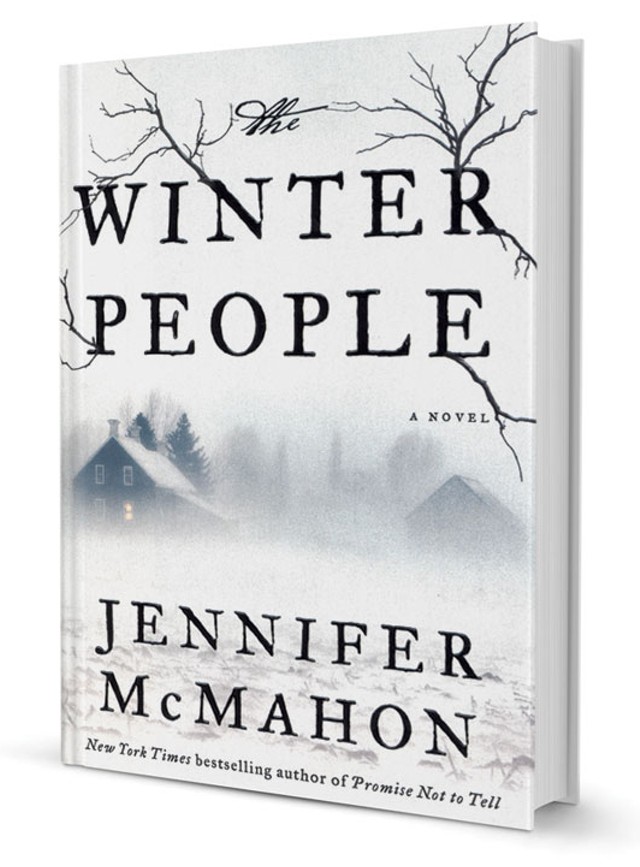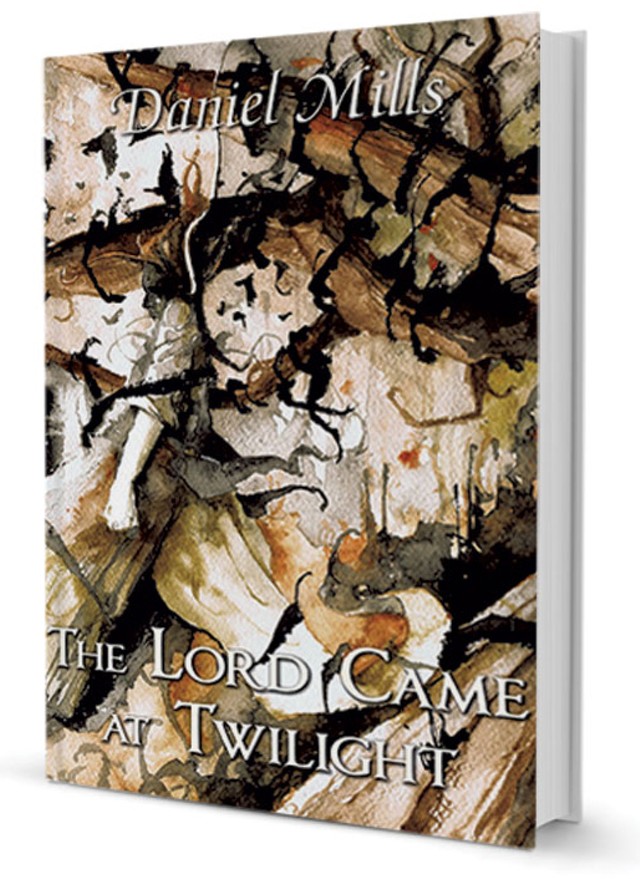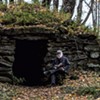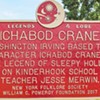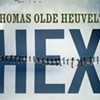Published March 19, 2014 at 4:00 a.m. | Updated October 27, 2020 at 2:56 p.m.
What's spooky about Vermont? Not much, if you focus on the state's wholesome, farm-fresh public image. But when you explore its darker, more desolate byways, a different picture emerges. A visit to the "wild domed hills of Vermont" gave horror legend H.P. Lovecraft his setting for "The Whisperer in Darkness." In the inimitably creepy tale, published in 1931, Lovecraft describes the state as "a region where old, strange things have had a chance to grow and linger because they have never been stirred up."
In more recent years, Joe Citro's collections of local lore have inspired eerie short films and tours of purportedly haunted landmarks. This spring sees the release of two books from local authors that contribute admirably to the "Vermont gothic" tradition.
Montpelier's Jennifer McMahon has published a slew of suspense novels with a gothic bent, but her latest, The Winter People, is a full-on ghost story. Hinesburg writer Daniel Mills, a 2007 University of Vermont grad, has made a name for himself among enthusiasts of Lovecraftian horror with his short fiction and 2011 novel Revenants: A Dream of New England. Now California's Dark Renaissance Books has published a collection of his stories called The Lord Came at Twilight. The book is currently available in limited hardcover and deluxe editions; a trade paperback is forthcoming.
Both Mills and McMahon use Vermont as a primary setting — to very different effect. We stayed up late by the fireside to savor the shivers from their weird tales.
Granted, "weird" may be the wrong word to describe McMahon's fiction. Her novels tend to over-rely on familiar tropes: abducted children, fairy tales turned dark, psychos on the loose, sinister wise women. The Winter People takes place in a rugged, rural area that has seen several mysterious disappearances over a half century. "The West Hall Triangle, people called it. There was talk of satanic cults, a twisted killer, a door to another dimension, and, of course, aliens..." The obvious inspiration is the "Bennington Triangle" centered on Glastenbury Mountain — a term coined by Citro, who chronicled the region's history of vanishings.
But who cares if the idea is new? McMahon uses an unusually sophisticated time- and perspective-hopping narrative to do what she's best at: jack up the tension. As the story progresses in two different centuries, building toward thrilling (if not always surprising) revelations, readers may find the book hard to put down.
Both alternating narratives concern residents of the same West Hall hill farm. In 1908, Sara Harrison Shea and her husband struggle to feed themselves on the barren plot. Schooled by her Native American caretaker, Sara believes the land is wandered by "sleepers" or "winter people," who have been "called back from the land of the dead by grieving husbands and wives." After she experiences her own family tragedy, she begins to consider a seemingly unthinkable option.
In the present day, 19-year-old Ruthie shares the farm with her sister and homesteader mother, who has cautioned her not to venture into the woods. But when Ruthie's mom disappears one frigid January night, she has no choice but to investigate the mysteries of the West Hall Triangle. The search leads her to Sara's "secret diary," published after its author's violent death. Soon Ruthie is on a collision course with Boston artist Katherine, who wants to know why her husband visited Sara's former home on the last day of his life.
From the novel's first pages, horror fans will recognize its central conceit from Stephen King's Pet Sematary, W.W. Jacobs' "The Monkey's Paw" and countless other cautionary tales of bereaved people who refuse to let their loved ones stay dead. The reader knows that resurrection magic never works in fiction without untoward — often horrific — consequences. But McMahon's grief-driven characters, apparently unfamiliar with the saying "Be careful what you wish for," are eager to give it a try.
The characters' classic-horror-film naïveté widens the distance between them and the reader; by the time the ending rolls around, after plot twists galore, it may be hard to care about their fates. McMahon tends to draw her characters in broad strokes — villainous, passive, spunky, fey — and to psychologize in clichés. (One character experiences a revelation that "felt like a punch in the gut, hard and heavy.")
As a meditation on the consequences of grief, then, The Winter People falls short. But as a campfire tale, it triumphs. Horror doesn't need freshness to horrify, as last summer's hit film The Conjuring proved. Indeed, fear is such a conservative emotion that an original concept, by awakening our curiosity, can free us from its stifling clutches.
Like director James Wan, McMahon rearranges hoary horror elements in ways that awaken the scared child inside us. She wisely keeps the "sleepers" off stage for as long as possible, letting them manifest in old-house noises and fleeting glimpses and "a smell, a terrible burning-fat sort of reek." Moment by moment, it's a scary book. When the complete outline of the plot emerges, the tension drops, as McMahon loses the advantage of being able to say, "Boo!"
The Winter People doesn't leave us with lasting dread. Still, McMahon grasps the power of Lovecraft's notion of a rural isolation so deep that it shelters "old, strange things" — even in the 21st century. The book has passages that will make you tense and glance around furtively — the truest test of a ghost story.
While McMahon grabs us on a visceral level with the wrongness of the walking dead, Mills deals in a subtler, more creeping brand of horror. Some of the tales collected in The Lord Came at Twilight feature ghosts, cursed objects and other familiar folkloric motifs, but their real subject is the dread of the unknown.
That includes the numinous "revealed truths" of religion. As the title indicates, Christian imagery and themes permeate Mills' stories; most are set in the Victorian era, when skeptics were comparatively rare. Yet the Protestant God emerges from these tales not as an antagonist of supernatural evil but a source of fear and trembling in his own right.
Like early American author Charles Brockden Brown, Mills seems fascinated by the power a preacher wields over his flock when he claims to see the invisible. The agnostic narrator of "The Tempest Glass" writes that he learned as a child "not only to fear God, but to fear those ... who would claim to understand His Will."
That fear is justified by stories in which charismatic preachers abuse their power. "Whistler's Gore" is an inventive tale told in headstone epitaphs supposedly found in a Vermont churchyard. From their pious euphemisms, we learn how a minister's unorthodox sermon wrought a sea change in his congregation. In "The Naked Goddess," a railroad man on his way to Vergennes stumbles into an unmapped village whose residents have been living under another renegade preacher's direction — with bizarre results.
Mills depicts remote Vermont farmsteads and villages as worlds unto themselves, islands of atavism like the actual island in the 1973 horror classic The Wicker Man. Lovecraft embraced this notion, too. In "The Whisperer in Darkness" — to which Mills pays homage in his story "Whisperers" — the horror master envisioned Vermont's jagged terrain as a set of unreadable runes left by an ancient alien race. Mills' approach to the region is more historically informed, however. Each landscape is a map of past tragedies for those who know how to read it. "We live, we die, and still the land remembers," says the narrator of "The Hollow." "These hills offer no rest, no escape."
In "The Wayside Voices," the march of railroads across the state leaves an accursed tavern stranded on a now-abandoned toll road. "The Naked Goddess" takes place earlier, when railroads had yet to span Vermont, their progress hindered by "truculent farmers." The tracks stopped at Rutland, a settlement of "dirty, ramshackle buildings," forcing the story's narrator to venture north on horseback:
For many miles the road continued to climb, winding through forgotten towns, villages left empty when "merino fever" subsided and there was no longer enough food. I rode for hours and met no one. A quiet desolation lay upon that deserted landscape, gathering over the abandoned farms and cemeteries that climbed the slopes of every forested hill. There was something of beauty there — in the push of a sapling through a fallen roof or the growth of moss on a weathered gravestone — but it was a grim beauty, founded in suffering and failure: both beautiful and terrible, and indeed, more beautiful for being terrible.
Beauty also shows up paired with terror in several stories where a spectral female figure seduces an unreliable narrator into proximity with the unknown. Mills draws tension from the familiar Victorian conflict between reason and carnal temptation, while giving his succubi figures human shadings and pathos. Some of the stories read like thought experiments designed to bring intellectual concepts to life. For instance, "The Falling Dark" both describes and demonstrates the folklorists' concept of liminality, key to the workings of horror. In "John Blake," an extreme interpretation of liberty, embodied in the checkered career of a Revolutionary War patriot, becomes a monster in its own right.
Few of these tales deliver shocks, and few end with the sort of O. Henry-esque snap that readers may expect from short horror fiction. Instead, they create a miasma that lingers. "Dust From a Dark Flower" has all the ingredients for a fright film in the tradition of "body horror," but Mill's languid, neo-Victorian style keeps the gruesome elements at a remove.
What readers are likely to remember about these stories are not their plots but their places. That's not a criticism: Would HBO's "True Detective" have been so unsettling without its fixation on Louisiana's swampy vistas? Working in his own medium, Mills produces descriptions that are painterly and sometimes cinematic. In "House of the Caryatids," for instance, a young Yankee soldier's visit to a seemingly deserted Georgia plantation plays out with nightmarish detail and vividness (see sidebar).
Mills' descriptions exhibit a lyricism and nuance lacking in the book's illustrations by M. Wayne Miller, a veteran of role-playing-game art. But Miller's hyperbolic images have their own special charm, evoking the Scholastic Press horror anthologies that kids devoured in the pre-Goosebumps era.
It's heartening to see a young genre author being published in such an attractive format, and still more heartening to see local writers venture back into the not-so-pastoral landscapes Lovecraft evoked. Cell towers and high-speed internet may have arrived, but Vermont still has its dark places.
The Winter People by Jennifer McMahon, Doubleday, 336 pages, $25.95.
The Lord Came at Twilight by Daniel Mills, illustrations by M. Wayne Miller, Dark Renaissance Books, 240 pages. Deluxe hardcover edition, $45. More info at darkrenaissance.com.
From "House of the Caryatids" in The Lord Came at Twilight
That morning was particularly hot, as I remember, sunlight blurring the dogwood with the magnolia and all of it shimmering with damp. The three of us had left the camp at dawn on a foraging party but later sneaked away from the others so as to prowl alone that empty country, seeking out whiskey or ale or a woman's company.
At noon, we came to an old wagon road and this we followed uphill till we reached a kind of promontory. From there we spied a large plantation below, a square house ringed with columns. It looked to have been abandoned during the previous summer, and in some hurry, for the crops lay unharvested, the pastures brown and sickly.
We descended the far side of the ridgeline, catching ourselves when the sodden earth crumbled and gave way underfoot. The sun beat down on us, hotter than before, and the world itself seemed to shrink from its glare until the rest of our regiment came to seem immeasurably far away, the road back masked by rising heat.
We came to a crossroads marked by a splintered signpost. "The Pillars," it read, "1 mile," the sign angled in such a way as to point down a narrow road.
The earth was muddy, the track well-faded, but we took it gladly, dreaming already of that big house and whatever we might find inside. And though the distance may have been a mile by the crow's flight, the route proved torturous in the extreme, dipping and weaving all the time, circling round swamp and sinkhole alike, so that it was the best part of an hour before we emerged at the edge of the plantation itself.
More By This Author
Speaking of...
-

Q&A: Meet a Family in Waterbury That Embraces Halloween Year-Round
Feb 14, 2024 -

Video: Goth Family in Waterbury: Sarah, Jay and Zarek Vogelsang-Card
Feb 8, 2024 -

'Pearl' Stunningly Melds Horror With Classic Hollywood Melodrama
Sep 21, 2022 -

Vermont Author Jennifer McMahon on Her New Horror Novel, 'The Drowning Kind'
May 26, 2021 -

The Legend of Author and Folklorist Joe Citro
Oct 28, 2020 - More »
Comments
Comments are closed.
From 2014-2020, Seven Days allowed readers to comment on all stories posted on our website. While we've appreciated the suggestions and insights, right now Seven Days is prioritizing our core mission — producing high-quality, responsible local journalism — over moderating online debates between readers.
To criticize, correct or praise our reporting, please send us a letter to the editor or send us a tip. We’ll check it out and report the results.
Online comments may return when we have better tech tools for managing them. Thanks for reading.


































